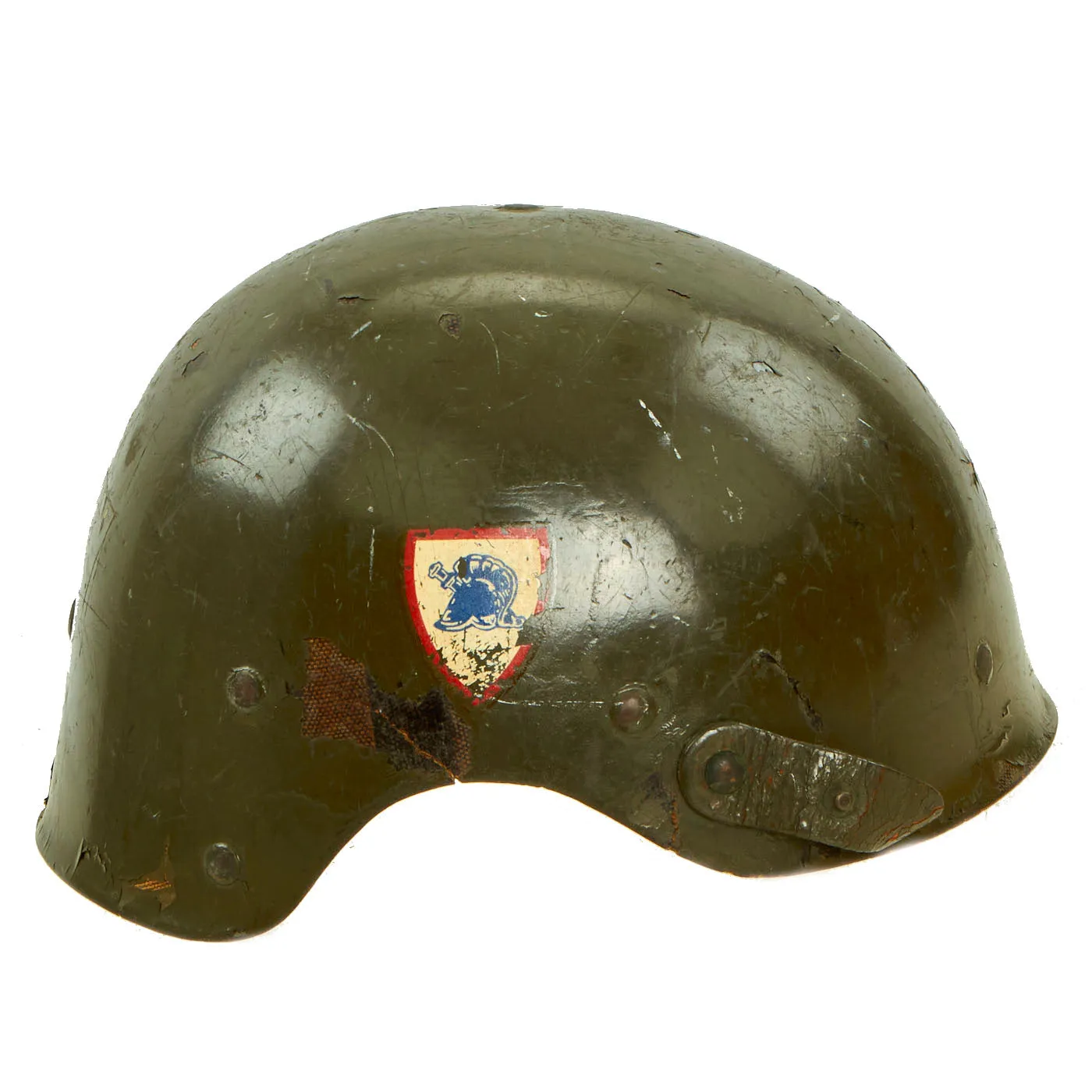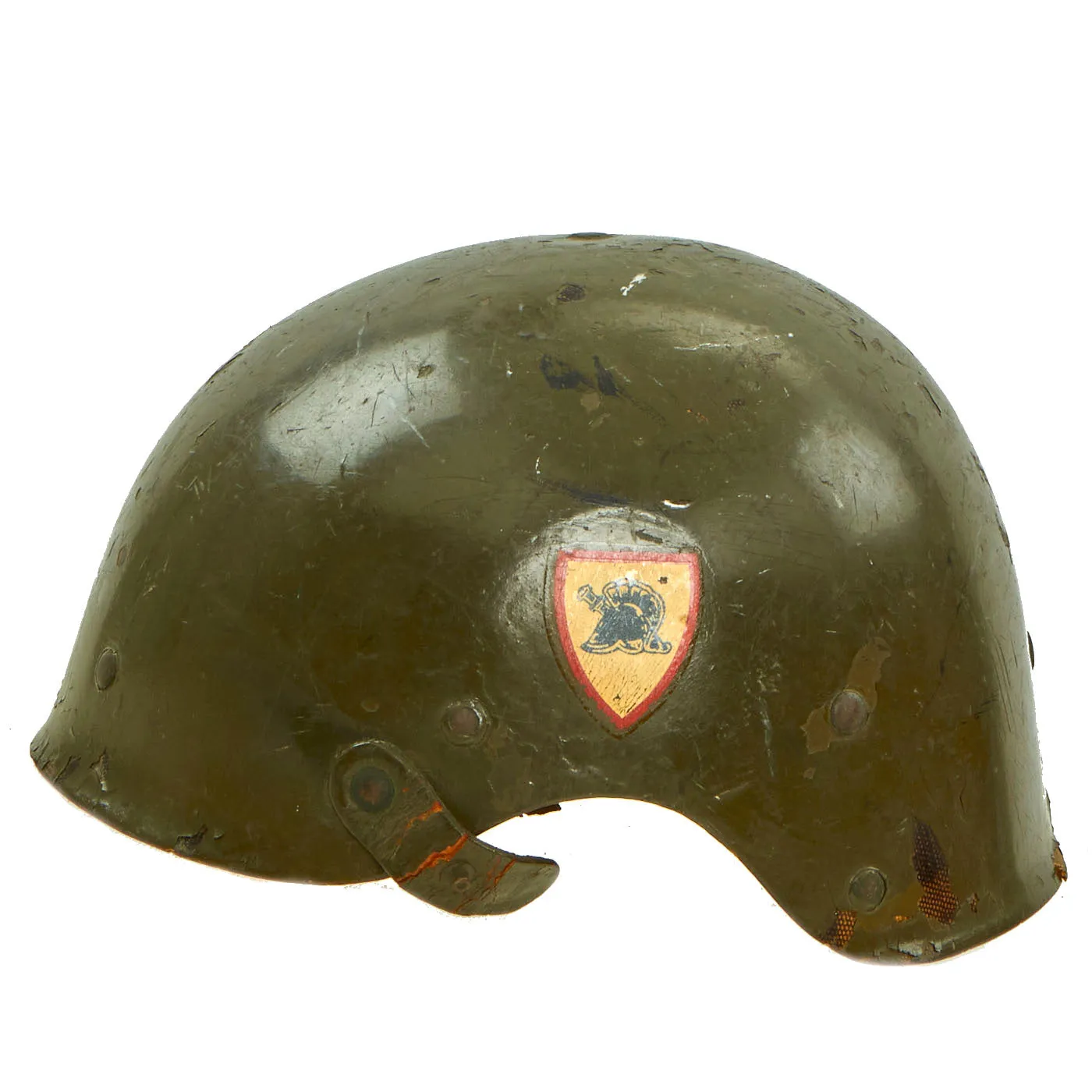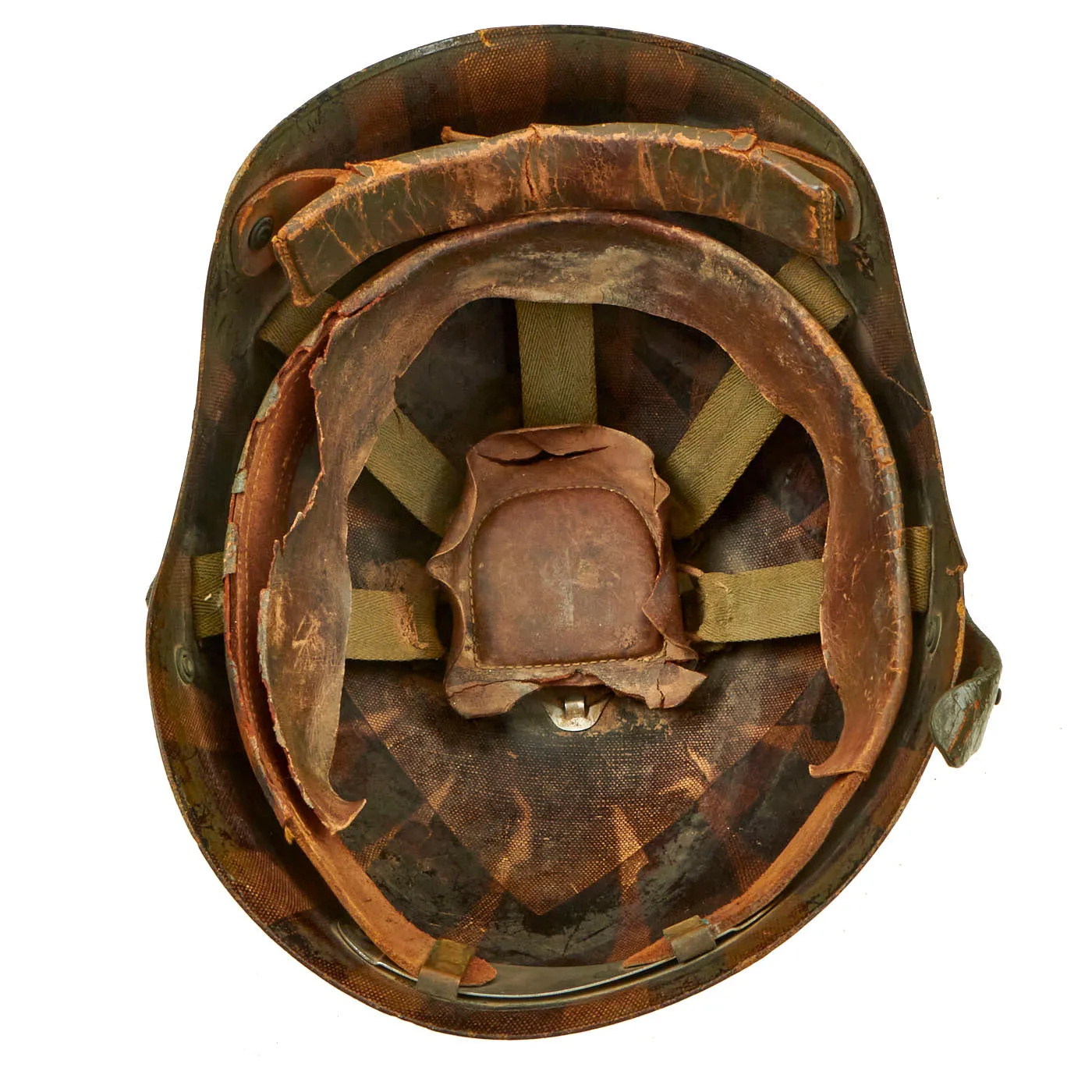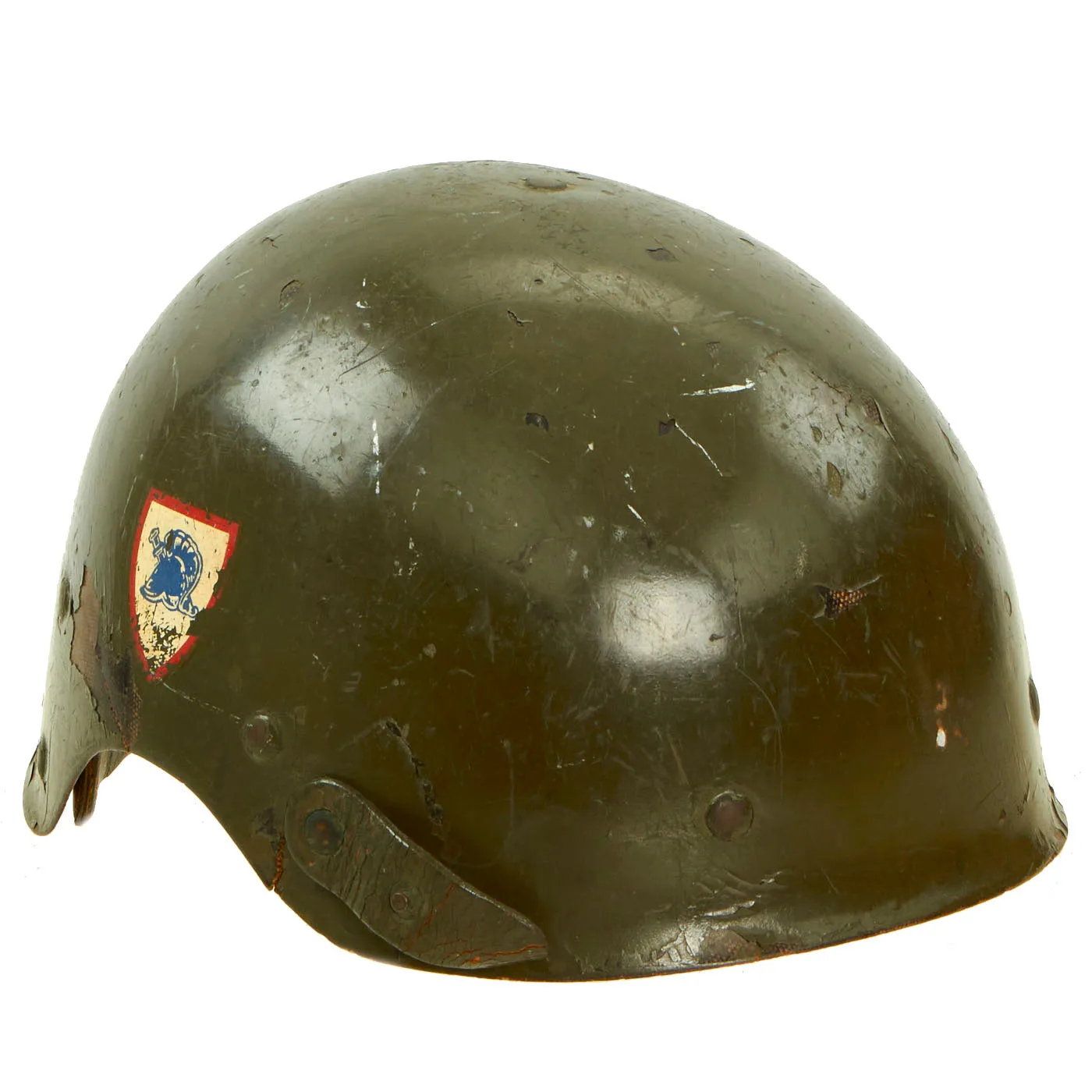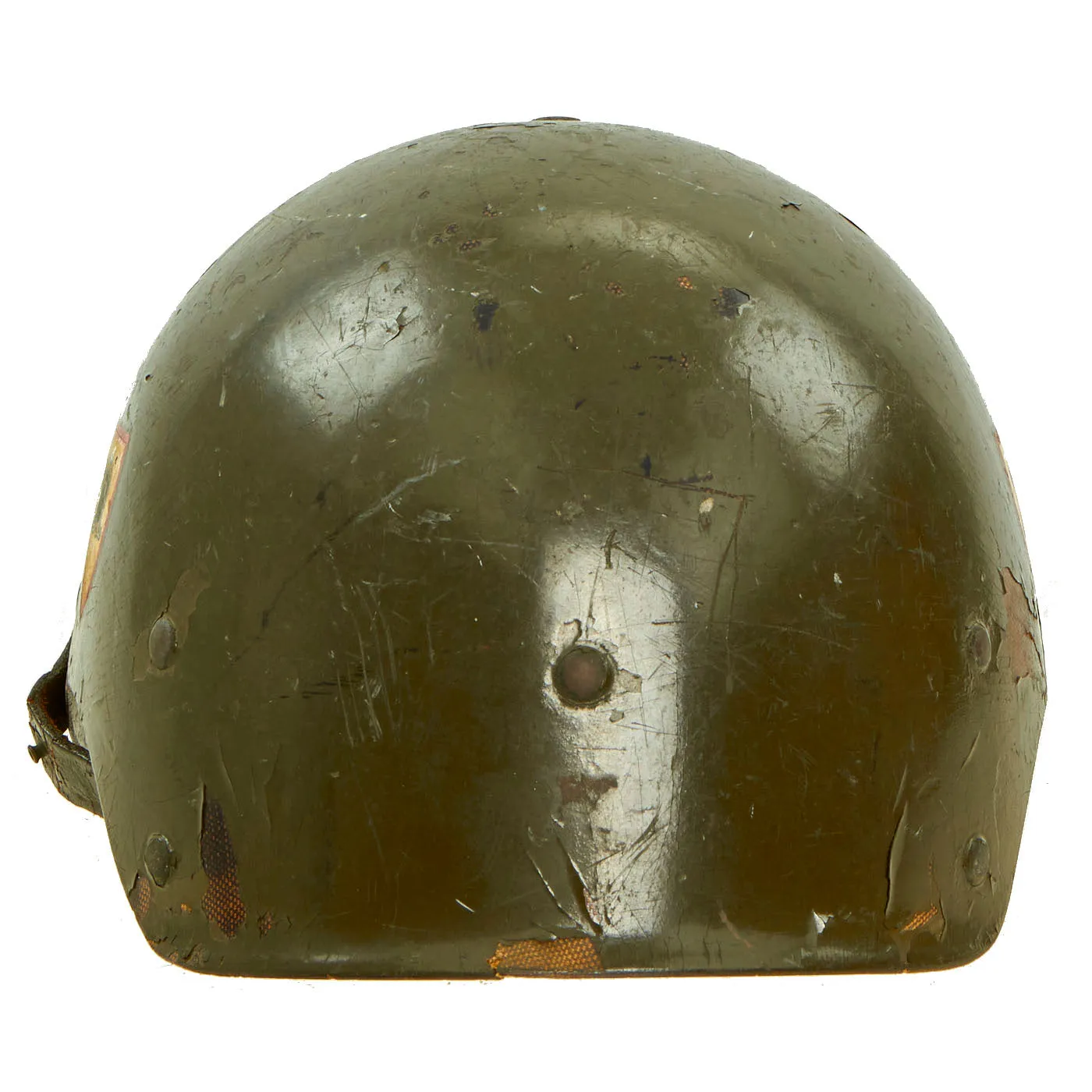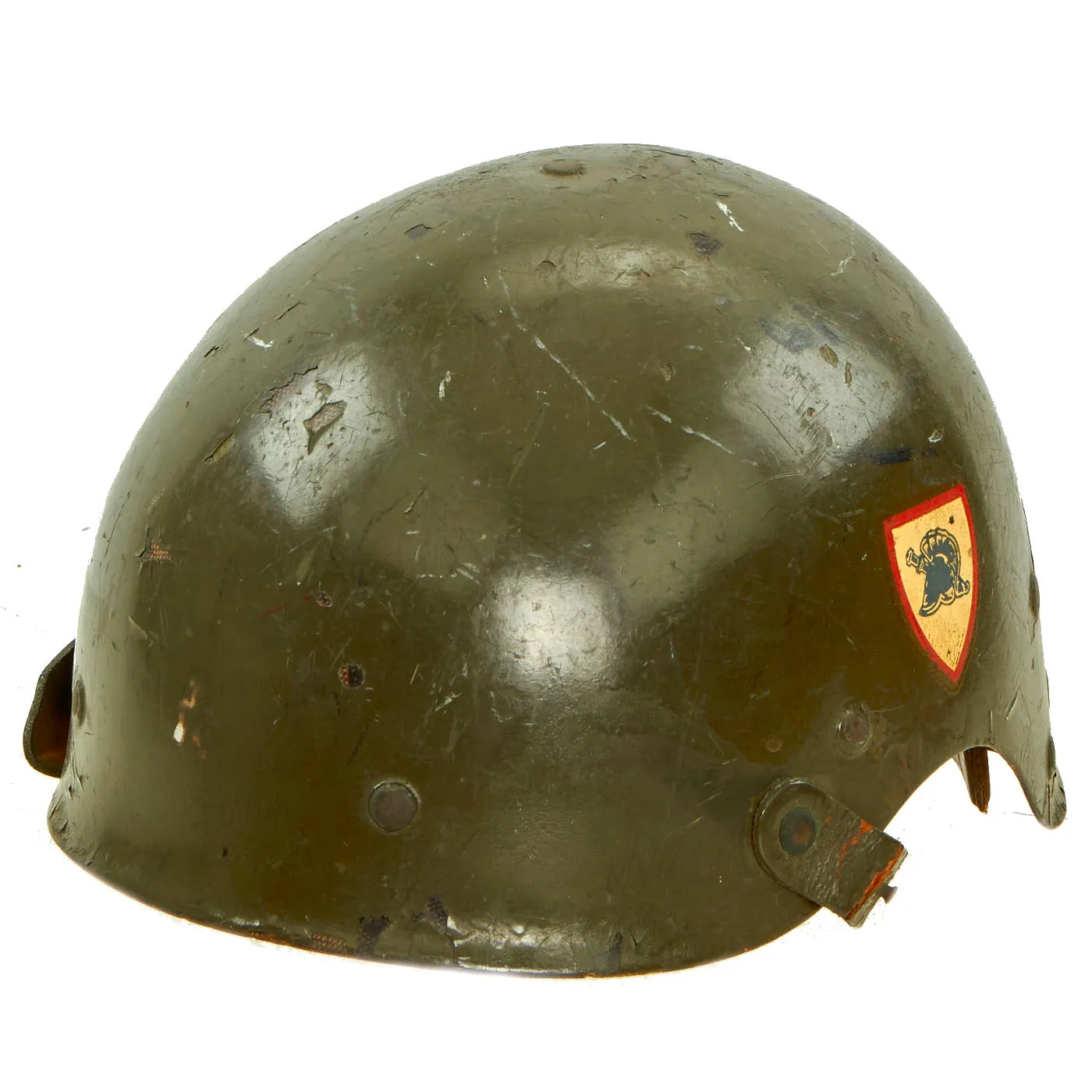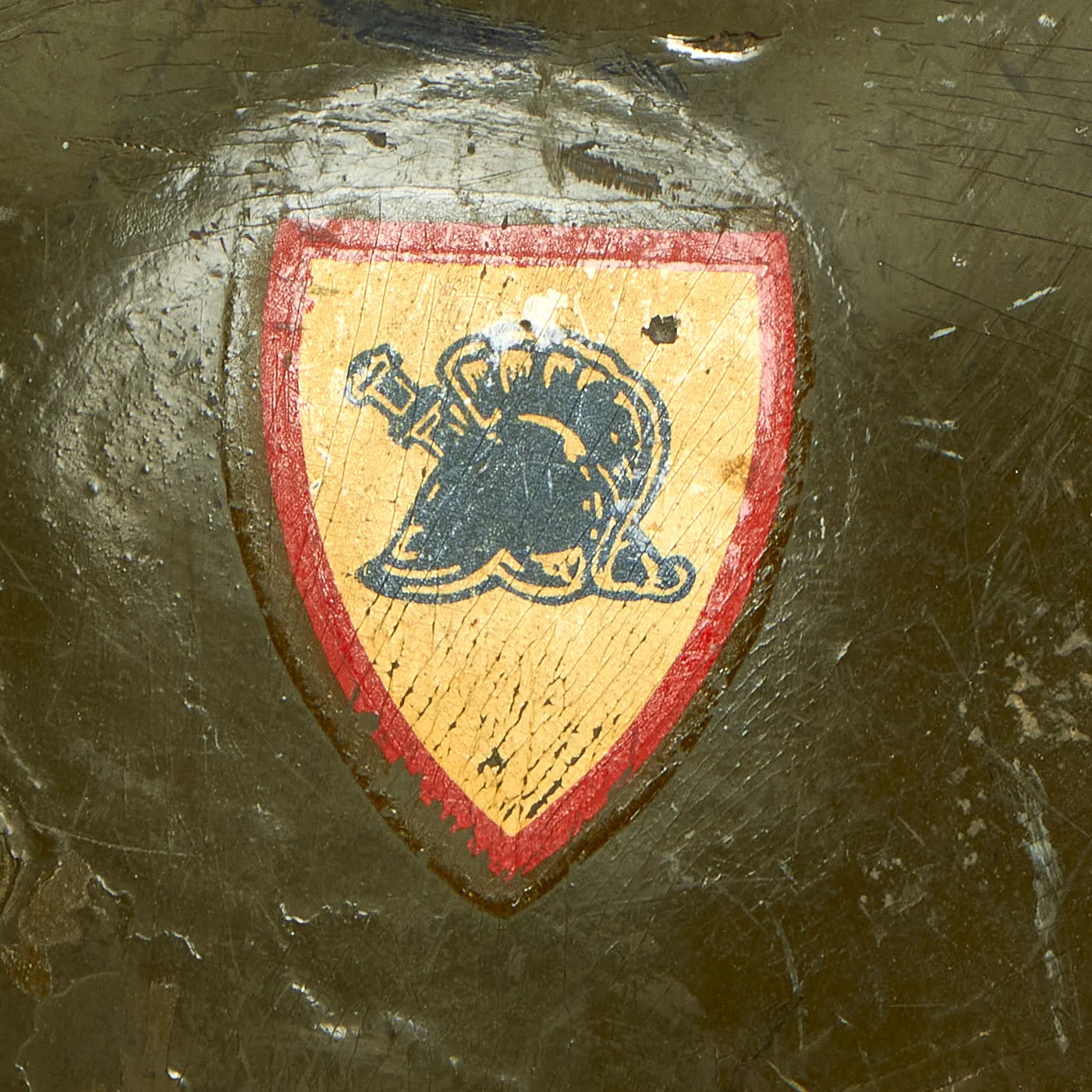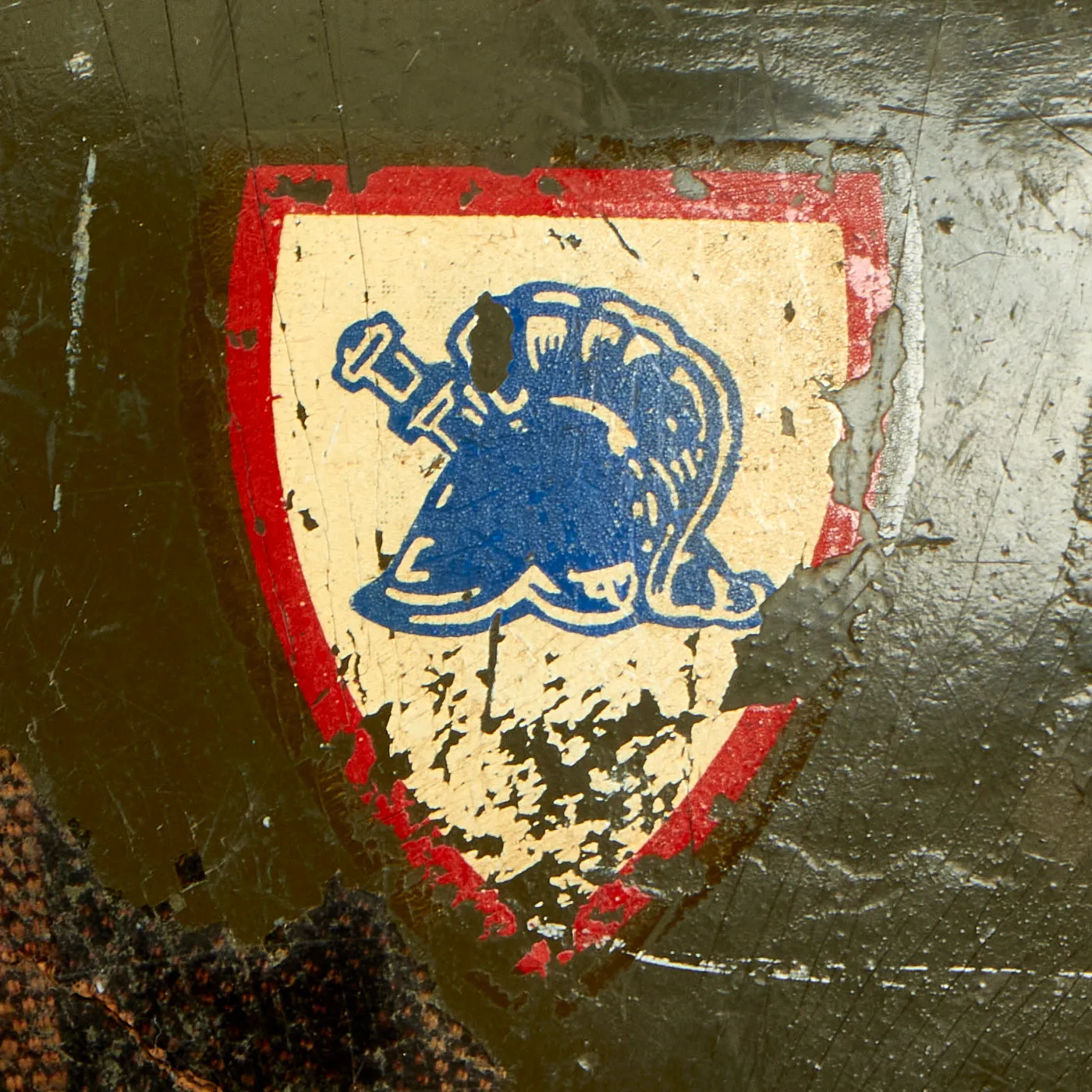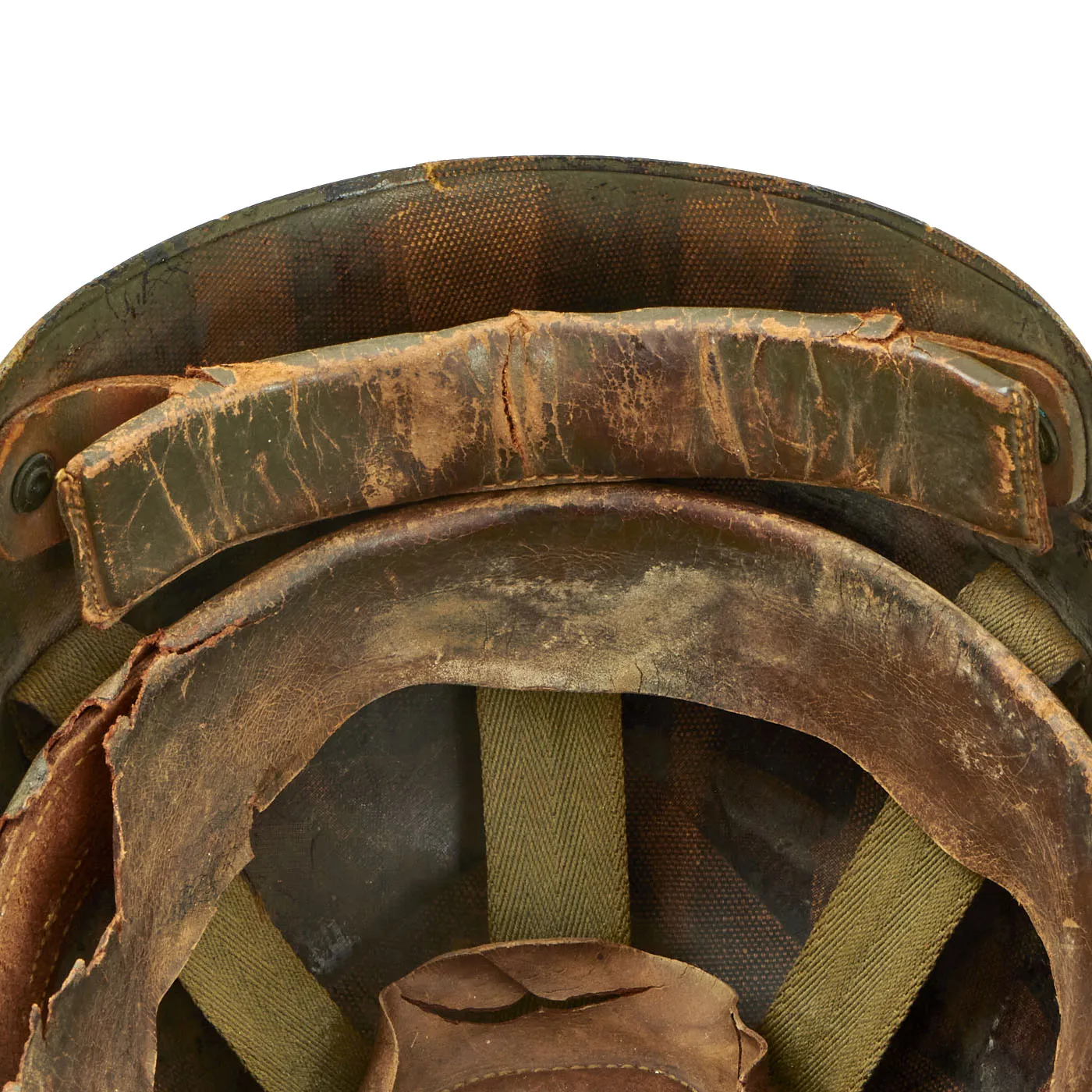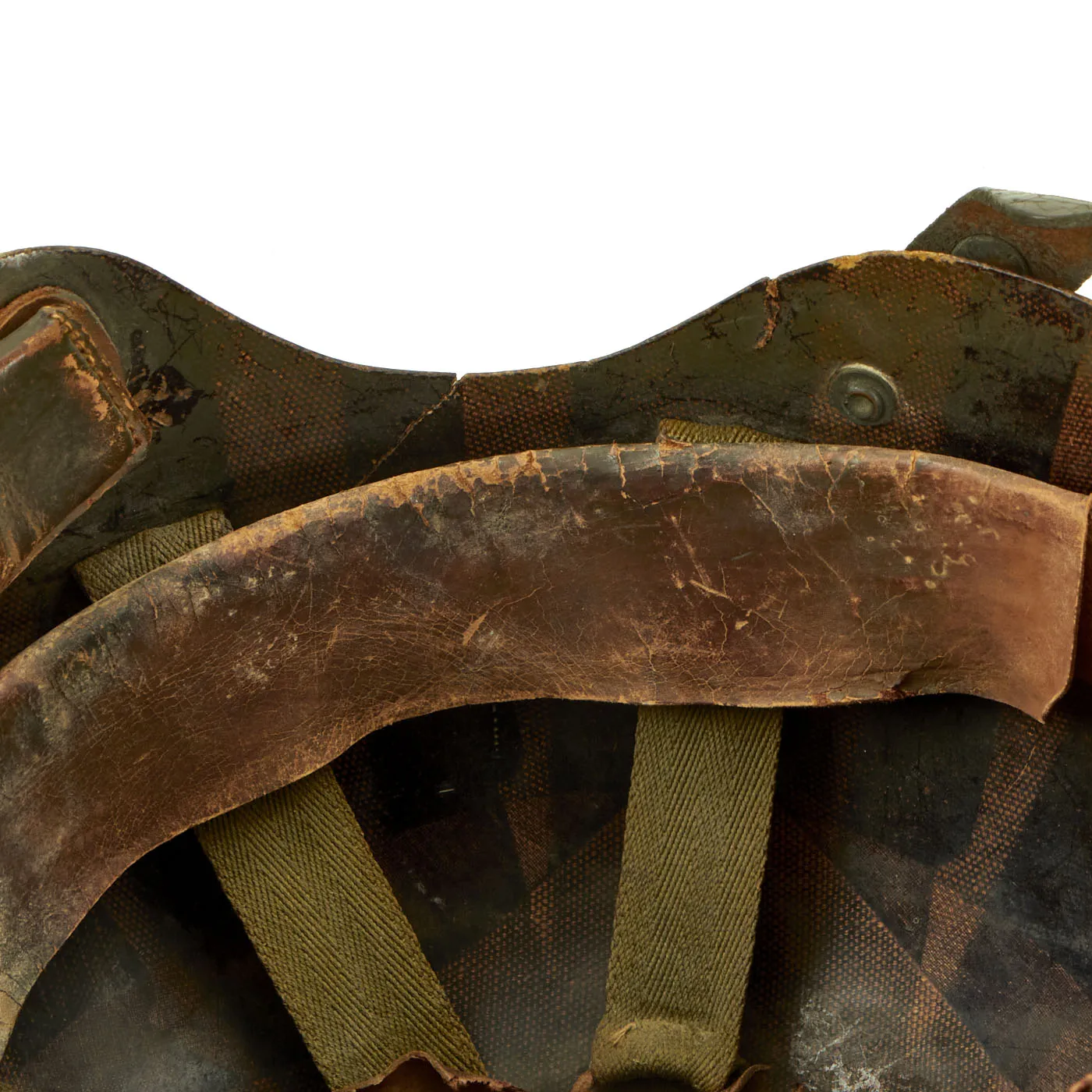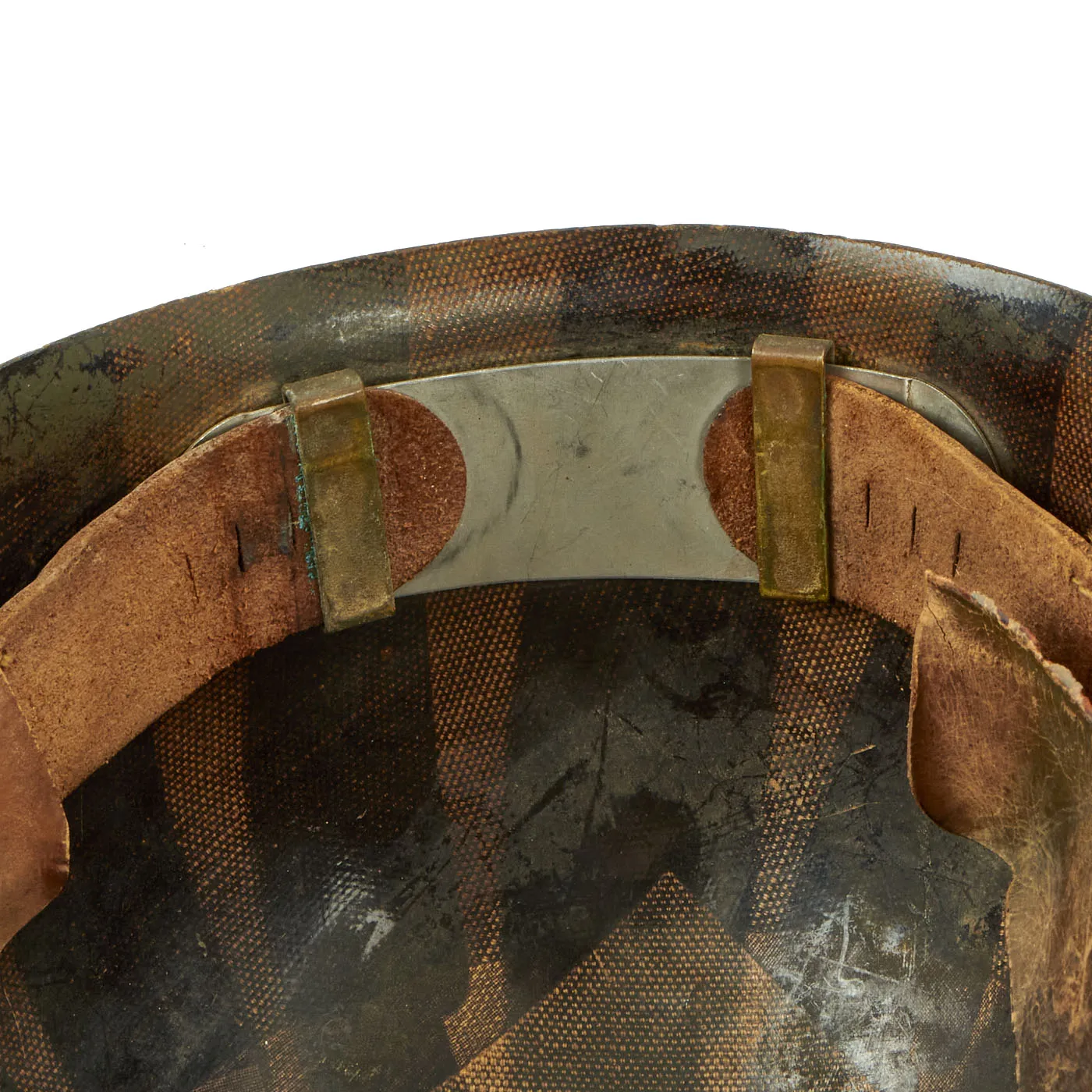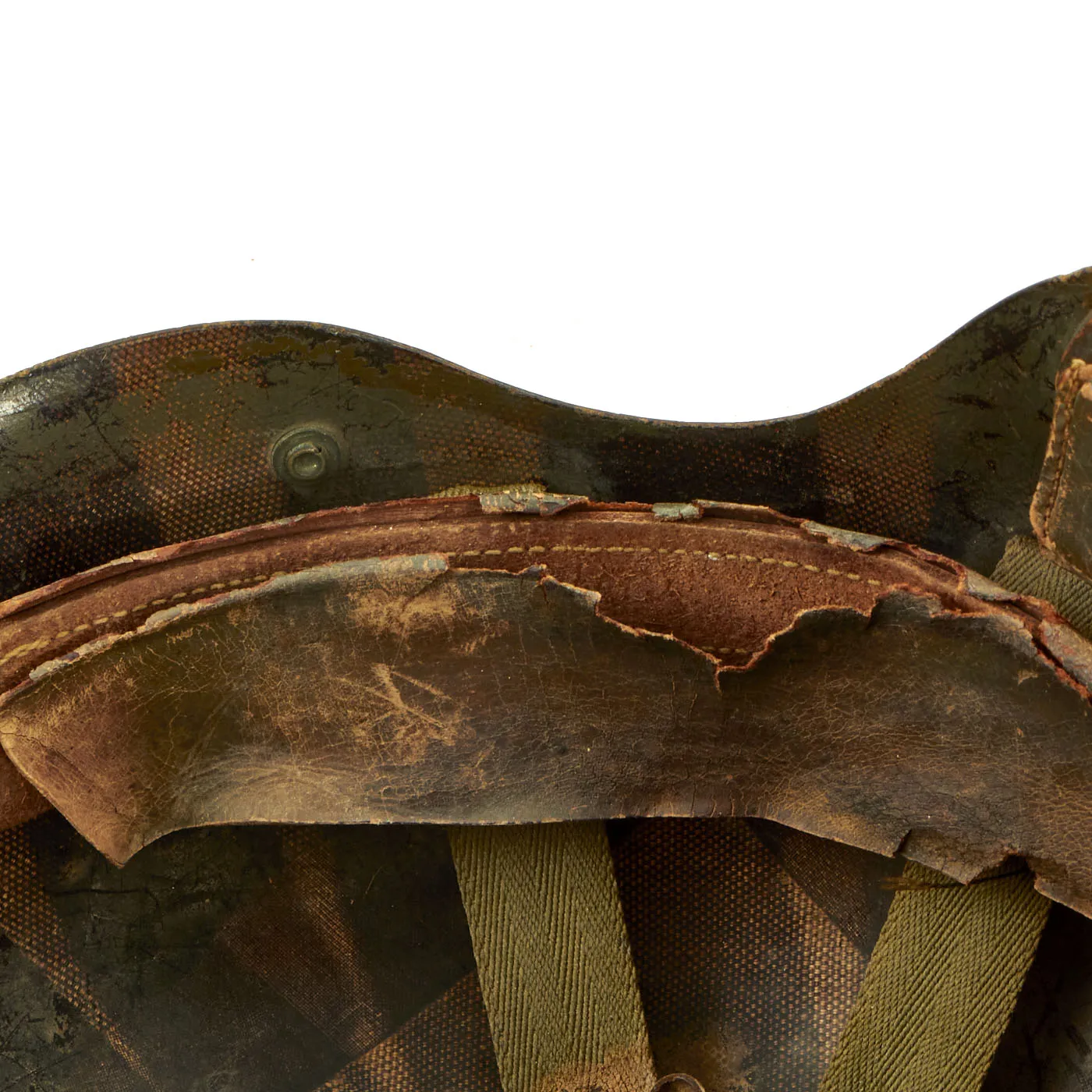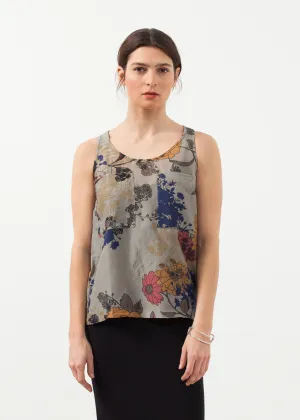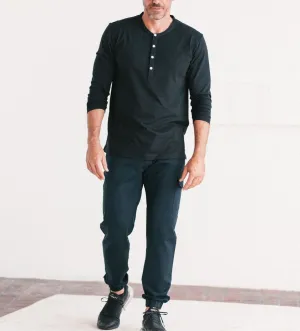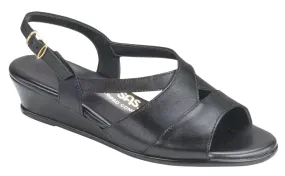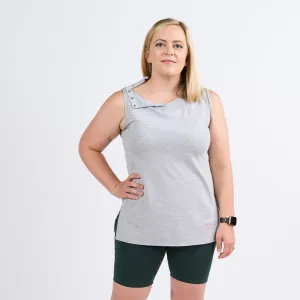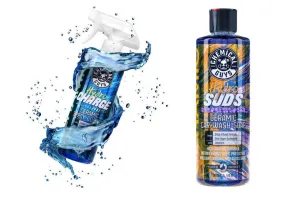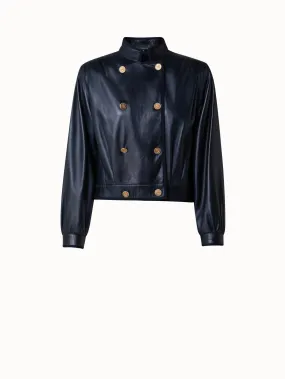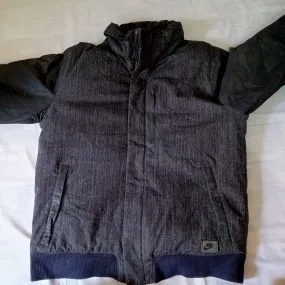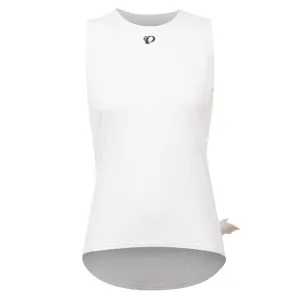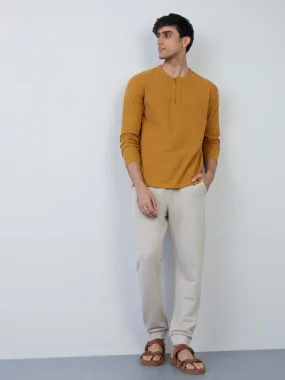Original Item: Only One Available. Now this is a rare item! This is a very nice "high pressure" helmet liner, designed to be used with the T19E1 tankers helmet, which was never actually put into production. These liners are quite rare, and this is a heavily used, but good example. Many were used for training post war, which subjected the liners to quite a bit of wear and tear. There were no replacement parts, so they could not be repaired.
This example is in good condition, and has the original leather chin strap mounts, but is missing the chin strap. The interior is mostly intact, only missing the front brow pad and shows heavy wear. The adjustment system is somewhat unique, using sliders that go over a metal fitting with a tab that locks into the leather of the liner.
The shell for these helmets was a modified M1 design, with the lower front removed, so that goggles and earphones could be used. This is a great chance to fill a hole in your U.S. WWII helmet collection. Ready to display!
The ‘Liner, helmet, M-1, Crash’ was designed by the U.S. Army Quartermaster Corps in 1944, as part of an ongoing project to equip armored vehicle crews with a helmet that would provide ballistic as well as bump protection. Several designs based on the M-1 infantry helmet were tested but none were accepted for use prior to the end of the war — none, except for the ‘Liner, Helmet, M-1, Crash’.
Tank crewmen operating outside the vehicle and drivers and tank commanders who would normally have their head exposed had to rely on the standard M-1 infantry helmet worn over top the leather tank helmet. This helmet combination proved unwieldy and unbalanced and led the Armored Board to request the Ordnance Department and the Quartermaster Corps for help in designing a new tanker helmet which would provide ballistic as well as bump protection, be able to incorporate radio equipment, and be able to be worn inside the tank without interfering with optical and sighting devices.
The first crash helmet liner was designed to accompany the T-19E1 helmet shell. Two hundred of this liner and shell were tested by the Armored Board in early 1945 but rejected because of instability. The original test liner did not have a chin strap and the interior lining was constructed differently than the final version. The Armored Medical Board though rejecting the T-19E1 shell did accept the liner portion with the addition of a chinstrap. The modified liner was to be called the ‘Liner, Helmet, M-1, Crash’ and was to be used with the steel shell portion of the M-1 infantry helmet until a replacement for the T-19E1 could be developed. The Armored Board ordered the new liner into immediate production.




